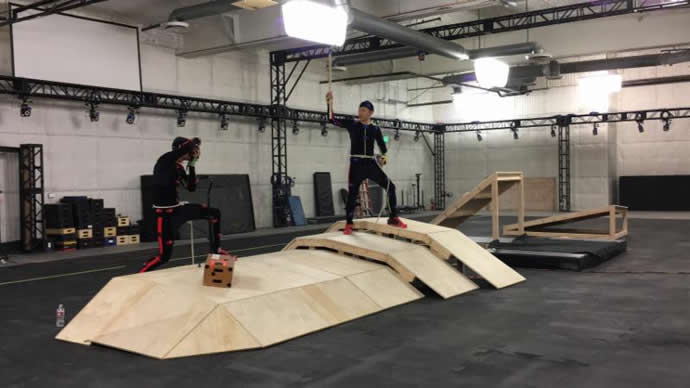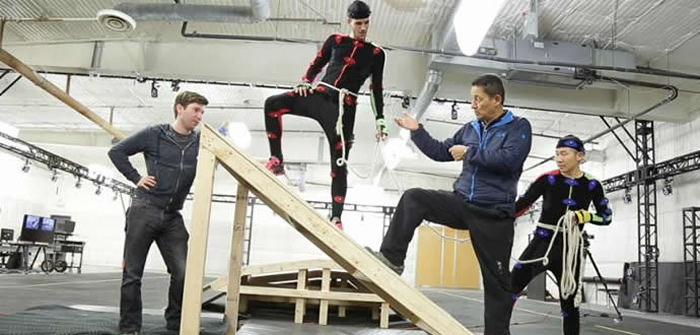CGO Studios is over a year into production on “Everest ’53,” the latest project on their production slate of historical “time-travel” VR experiences, announced Producer Jonah Hirsch, CEO and Founder of CGO Studios.
When CGO Studios announced its previous VR project “Anne”, about Anne Frank and the Secret Annex, the project received worldwide attention. Hirsch’s premiere VR film, “First,” about the Wright Brothers’ famous flight at Kitty Hawk, debuted at E3 and then later at Comic-Con in 2015, where it was named one of the Top 5 VR Experiences that year. Now, with “Everest ’53,” CGO Studios cements its status as the go-to studio for historically accurate cutting-edge VR content.
“Everest ’53” will take viewers to the highest point on earth and allow them to witness another monumental historical event in the 20th Century. Directed by Danny Abrahms, produced by Hirsch, and with visual effects by Los Angeles based VFX company Dilated Pixels, this project reunites the team behind “Anne.” Executive Producers on “Everest ’53” are Peter Hillary, Jamling Tenzing Norgay, and Norbu Tenzing, the sons of Sir Edmund Hillary and Tenzing Norgay, the very first climbers to successfully summit Mt. Everest.
Both Peter Hillary and Jamling Tenzing Norgay have successfully summited Mount Everest and therefore will not only assist in the historical curation of the piece, but also in the very technical nature of recreating climbing techniques of the day.
“In 1953 they were climbing into the unknown. Could it be done? Was the altitude going to be too much for our human physiology? And of course they were using old wooden ice axes to cut steps in the steep ice. They were literally at the limits of our knowledge and the alpine techniques of the time,” said Peter Hillary. “It was an extraordinary achievement, and the confidence of all humanity took another step up as a consequence,” he added.
Norbu Tenzing, Vice President of the American Himalayan Foundation will also be providing his expertise and knowledge to ensure the utmost historical accuracy.
 “To relive and experience history in VR and know what it felt like to be the first humans on the highest point on earth, this project will be an extraordinary experience. It was at that time the closest man had come to getting to the moon,” said Norbu Tenzing. “The Tenzing family is very much looking forward to sharing this with the world,” he added.
“To relive and experience history in VR and know what it felt like to be the first humans on the highest point on earth, this project will be an extraordinary experience. It was at that time the closest man had come to getting to the moon,” said Norbu Tenzing. “The Tenzing family is very much looking forward to sharing this with the world,” he added.
“The first successful summit of Mount Everest is one of the great moments of human achievement, teamwork, and perseverance. By recreating this moment, we hope the experience will inspire viewers from all walks of life. Plus, the view from the top of Everest is a sight to behold”, said Abrahms.
“Everest ’53” will recreate, in a way not possible before VR, the first successful summit of Everest. Unlike some of the other VR experiences that focus more on recreating a modern day climbing experience, “Everest ’53” will focus on the historical aspects of the first climb, while also including interactive components.
“Mount Everest is one of the most awe inspiring places on Earth and will continue to inspire and spur imagination for years into the future. Since starting the project over a year ago, we’ve constantly been inspired by these two historical figures and we are very excited to share their story in the most immersive and engaging way possible,” said Hirsch. “‘Everest ’53’ is being developed on the Oculus Rift with the Touch controllers and will be initially demoed later this year,” added Hirsch.
The successful summit of Mount Everest is widely considered the pinnacle of mountaineering, let alone physical achievement, even by today’s standards. Prior to 1953 many climbers risked their lives in attempts to climb the mountain which most thought was simply impossible due to its extreme altitude of 29,029 ft. (8,848 meters).
“Well, we knocked the bastard off!”, Sir Edmund Hillary’s famous quote on the descent to a fellow climber.
“We are honored that the families and caretakers of these historical figures and historic events entrust us with their legacies, and allow us to tell their important story using the new technologies at our disposal. We strive to engage, educate, and entertain people and to use our virtual “time-machine” to transport them to some of history’s milestone moments in a profound and meaningful way,” said Hirsch.

